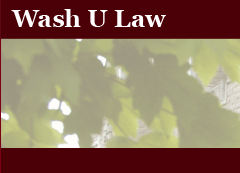Ghetto Education
Publication Title
Washington University Journal of Law & Policy
Abstract
The important role of education in America is evidenced in compulsory school attendance laws enshrined in state constitutions and codes; it is made apparent in the vigorous and often heated debate over education reform at the state and national level; and it is endorsed in the powerful rhetoric of our highest court. However, something has gone terribly wrong in the American system of public education. Two systems of public education have emerged—one for the privileged and one for the poor. Under this paradigm, education equity, the promise of Brown v. Board of Education, remains unfulfilled. For the privileged, who are wealthy and mostly white, public education works just fine. Students graduate with the knowledge, ability, and ambition to achieve success across multiple domains. The poor, who are mostly urban and from historically oppressed groups, not only live in the ghetto of life but are also receiving a "ghetto education."
The pervasiveness of ghetto education is especially troubling in a "post-racial" America because it harkens back to the Jim Crow era, when black youth regularly received substandard education in segregated schools all across the country. Then, public education was targeted by the NAACP through institutional reform litigation because of the important role segregated, unequal education played in perpetuating the legal regime of racial subordination. Now, although there is significant data documenting an ever-widening achievement gap divided along lines of race and class, the discussion around education reform often skirts a frank assessment of the underlying causes of this gap. This Article addresses these underlying causes, which amount to ghetto education when grouped together. In Part I, I focus on the historical context of public education, which has important implications for my proposed reforms and policy initiatives. Part II examines the ghetto education phenomenon in its component parts and looks at how these components affect student socialization in detrimental ways. Part III argues for the constitutionalization of education equality. I set forth a national legislative agenda that includes the creation of a fundamental right to education and the repeal of No Child Left Behind.
Recommended Citation
Sarah Jane Forman,
Ghetto Education,
40
Wash. U. J. L. & Pol’y
067
(2012),
https://openscholarship.wustl.edu/law_journal_law_policy/vol40/iss1/3
